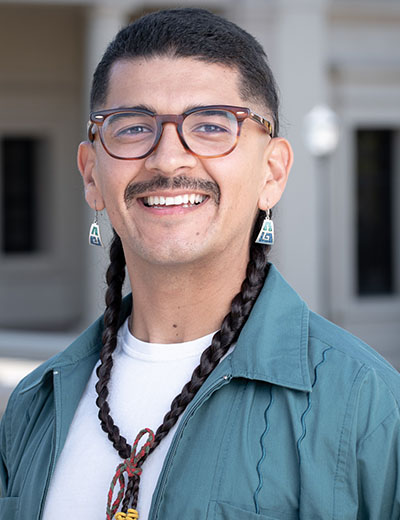Meet Jose Guadalupe Sanchez III of Art & Art History, an interdisciplinary artist with an emphasis in painting, whose work investigates the interactions between different value systems found throughout Los Angeles, with a focus on intelligence, legitimacy, and authority.

He comes to Oxy from USC, where he recently completed a yearlong teaching fellowship. He has a BFA from Otis College of Art and Design and an MFA from USC. His projects manifest as pedagogical interventions as an arts educator for marginalized youth, paintings, performance, video, documentary video, and his socially engaged art practice.
What attracted you to Occidental?
What most attracted me to Occidental, specifically the art department was the willingness to provide space for criticality. The application for this position was listed as critical studies in studio art: painting and drawing. Speaking broadly, this signaled an art department that was eager to enter into a space of possibility where tackling challenging topics would be welcomed. For me it meant having conversations that allowed us to question where our values come from, how we may perpetuate value systems we’re unaware of, and how to align ourselves to values with more intention.
What are your impressions of the students after your first semester?
I'm thrilled with the students' engagement and even more excited about the community students develop with each other in a learning environment. The classroom is a “real” space with real social and cultural capital at stake. How we navigate each other in this space shapes our interactions in the future. The students care to support and challenge each other in spaces like this are astounding! I am thoroughly impressed.
What does it mean to you to be one of Oxy’s first Mellon Faculty Diversity Initiative Post-Doctoral Fellows?
Being a recent graduate and having this opportunity is profound for me. I am absolutely grateful for the opportunity and thrilled to bring my perspective and set of skills to the department. As for being one of the first for this initiative I feel excited about the challenge of setting up a strong example for what can be accomplished with these types of diversity efforts. That is, facilitating and making space for the field of art to change in accordance to the needs of our era.
Your thesis exhibition at USC questioned the legitimacy of arbitrary distinctions such as life/death, alone/together, and past/present. What inspires your work?
The primary drive for my work is contributing to the global south’s effort in creating autonomous spaces for the self and community. Put in another way, our current dominant social structures generally alienate marginalized communities not only from access to resources but from a dignified sense of self. The result is a sense of not belonging, not being enough, and having something be inherently wrong with you. I want to explore where these value systems come from, how we internalize them, reproduce them, but also how we subvert them, and change them. In regards to my thesis exhibition, it was an effort and exploration of different realities that aren't grounded in western ontologies and epistemologies. Meso-american belief systems didn’t create clear delineation between life/death, alone/together, self/other, or past/present. I wanted to create a space that could bridge my assimilation to western culture with my diasporic context and ancestral connections.
